Hooray, you finished writing your book! But now, it's time to figure out how to sell it. And perhaps the biggest thing you need to nail is your book cover. To help you do that, here are our top book cover design tips to grab your reader (and get your reader to grab your book!).
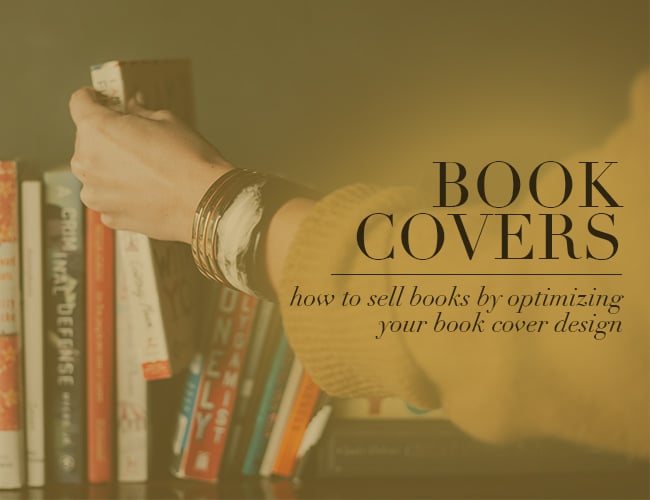
Selling Your Book Comes Down to YOU
It’s not just the first thing a potential reader looks at — if your cover doesn’t fire on all cylinders, capturing your target readers’ attention, it’ll be the only thing they look at before moving on to the next book.
Whether you plan to do it yourself or hire a designer, there’s a lot you need to know about how to put together a book cover that sells. If you’re an indie author, you are responsible for every aspect of the finished product. Don’t rely solely on the cover designer to get it right — it's up to you to figure out how to sell books, and more specifically, how to sell your book.
This can be difficult, because you have to get out of your writer mindset and into your marketer mindset, and that requires some mental shifting and a willingness to learn new skills. Our aim is to provide good guidelines, some examples to follow, and a list of resources to help you on your way.
So let's get stuck into our best book cover design tips to help you sell your book!
Our Best Book Cover Designers
Before we get started, if you're not already a professional designer, you're probably going to want to hire someone to help. But where do you look for a book cover designer?
At The Write Practice, we have a vetted list of book cover designers that we recommend. You can find them here, along with a link to their portfolio and contact:
Key: $= $100-349, $$ = $350-$750, $$$ = $750+
Book Cover Designers
Choosing a Designer
A beautiful cover might catch the eye—but that alone won’t sell your book. What you really want is a professional, genre-appropriate design that draws readers in, gets them to read your blurb, and nudges them toward clicking “Buy.”
Don’t be swayed by promises of “stunning” book covers. The cover’s job is to sell. Not look good. Some of the most beautiful covers do a lousy job selling.
Carefully review each designer's portfolio. If they don’t do a lot of work in your genre, you’ll probably want to move on to someone else. Do the covers look professional or homemade?
Check how their designs perform in the wild. Search for them on Amazon or other retailers. What do the thumbnails look like? How well are those books selling? Low sales doesn’t necessarily mean the cover is bad. But high sales is a good indication that the cover is working as a marketing tool.
What to look for
- How many concepts will you receive? Some designers provide one idea; others offer multiple options.
- What formats are included? Make sure you clarify whether the package covers:
a) Ebook
b) Paperback
c) Hardcover
d) Audiobook
Keep in mind: Kindle Direct Publishing (KDP) and IngramSpark have different specs. If you’re using both, you’ll need two versions. - How many revisions are allowed? You want flexibility, but some designers charge for changes after a certain number.
- Do they use AI-generated art? For many authors, this is a dealbreaker. Ask up front.
- Do they use stock images, and are the licenses valid? Make sure they have commercial use rights—and if possible, get that in writing.
What to look out for
It may be tempting to use a service like Fiverr.
Don’t.
There are a lot of talented graphic designers on that site who may or may not understand book cover design. The only exception to this is for something like a reader magnet. You can get away with a low-cost design on these unless you plan to put your reader magnet in paid ads. Then you’ll want to make the same kind of investment you would for your book.
Price is a consideration. Cheapest and most expensive are not the best choices. You can get great covers for $200 to $400.
Working with a Designer
Do not skimp on your market research. Understand the current genre conventions and don’t expect your designer to educate you on these.
This means you must spend a few hours looking at the top 50 to 100 selling books in your genre—and only look at indie books. Keep detailed notes. What design elements have been used? Do they use bright colors or more muted? How much white space is there? What images are repeated? Do most of the covers feature people or objects or scenes? What font styles are most common? Bold or delicate, serif or sans serif?
Can you pick up on any key themes or elements used in your genre? For example, if you write westerns, your book cover almost has to have a horse on it. If you write horror, pale pink is probably not going to work. (But it will do quite well for romance).
If you want to shortcut this process a little (and I mean just a little), invest $40 or so in the K-lytics report for your genre. Along with all kinds of useful market research, they share the top 100 covers in the genre. You’ll still have to study them, but you won’t be slogging through amazon searches to find them.
Once you have a firm idea of what’s selling, come up with three or four ideas for your cover. What images do you want? Or people? What are they doing?
By now, you might be thinking, can’t I just let the designer come up with something?
The answer is almost always no. Even if they say they will come up with a concept, they often can’t. They’ll pull ideas from Amazon and go from there. Since they haven’t read your book, they might not choose an idea that works for your book. You need to give them a starting point.
And when you give the designer direction, the more details, the better. Provide sample images or similar covers, so your finished product is exactly how you want it to be.
5 Front Cover Design Tips
The front cover is your book's first impression, so it makes sense to start here when you're learning how to sell books. Here are five ways to make sure you get your front cover right:
1. Study your genre
Look at the current bestselling books in your genre. Is the cover busy with artwork or clean and spare? What kind of color palettes are at work? What kind of font is used? Where are the elements — title, author name, tagline — positioned?
Readers choose based on emotion. Don’t appeal to their rational thought process here. Instead, evoke the emotion you want them to feel. This is true even for non-fiction, though not to the same degree. The head may come into it when you get to the back cover and blurb, but the front cover is all about the heart.
Look at what’s working for books in your genre and try to emulate that for your book.
2. Include a Teaser
Use a teaser, tagline, or subtitle. Too much text on the cover will dilute the power of what’s there. However, if you have a punchy, concise hint about the book’s most compelling plot line, including it on the front cover will give your book a more professional look.
And using a simple, genre-related subtitle will help search engines find your book more easily on platforms such as Amazon.
3. Look Professional
Your book must look professional. In today’s publishing industry, the reader is the new gatekeeper, and readers are becoming increasingly savvy at sizing up a book by its cover.
If you’ve worked hard to polish the inside of your book, making it the best it can be, apply the same work ethic to the outside.
4. Typography
If you’ve hired a competent and experienced designer, you won’t have to worry too much about choosing fonts and typography styles. If you’re designing your own, have a few sample covers that sell well in your genre and use them as a guide. Though you want your book to have a distinct style, you don't want to come up with something completely different; you want people to know immediately what genre the book is.
A Few Rules of Thumb to Keep in Mind
- The cover should pull your eye toward the center.
- The colors should not obscure any of the text. In other words, if the artwork has white areas and your back cover text is white, you could run into a problem where the words are indistinguishable from the art.
- Make sure the cover works as a thumbnail. With my second novel, Flicker of the Flame, we had trouble finding a font that would work. The problem was that in thumbnail size, the L and I in “Flicker” merged to form a U. Not at all the word I wanted on the cover.
- Test your cover. Ask people what genre they think the book is without telling them. If most get it right, then you know you’ve got a good concept.
- Don’t rely too heavily on feedback from other authors or Facebook groups. You can get some valuable pointers from these sources, but their opinions are just that. I tested four concepts using Facebook ads. To my surprise, the one the Facebook group hated and I thought would be the loser was the winner…by a conclusive margin. Testing with readers is the best way to find out what will entice a reader to click and to buy.
3 Back Cover Design Tips
If your front cover is your book's first impression, your back cover is where you'll close the sale. If you want to figure out how to sell books, make sure every word and design choice you make on your back cover convinces your reader they won't want to put your book down. Follow these tips:
1. Write a blurb that sells
Use a well-crafted blurb. I’ll cover this in more detail below.
2. Less is more
White space is your friend. Don’t overburden the back of your book.
Put the blurb in the center, with a tagline over or under it, and maybe a book review quote if it’s from a well-known source. Don’t use what your Aunt Jane said after she read your book, unless she’s a reputable authority on the subject. If it doesn’t crowd the space, you can include a short bio. But less is more.
3. Design for clarity
Make sure you, or your designer, use the appropriate font size and color.
Until recently, Mark Leslie ran Kobo Writing Life, the indie branch at Kobo. I first met him shortly after my novel Nocturne In Ashes was published, and I had a copy with me. I asked him what he thought of the cover.
He said the front was great, but he grimaced when he turned it over and looked at the back. He pointed out that the font was too small and the color allowed the text to be swallowed by the background graphic.
I hadn’t noticed before, but he was right. Now I try to be more discerning.
Back Cover Blurb Tips
Here’s a cold, hard truth for you, and it may hurt going down, but once you’ve swallowed and digested it, you’ll be better equipped to write your sales copy. Ready?
Readers don’t care how much time, sweat, blood, tears, or hard-earned cash you put into your book. They only care about what they stand to get out of it. And rightly so. For them, it’s all about the experience your book will provide, and that’s what you need to focus on in your back cover blurb.
This is a sales copy, folks. This is where you sell your book.
Your Book is a Product
Look at your book as a product. Writing sales copy is still writing, but it requires a different skill set and mindset. This back cover blurb will serve as your sales description, and you’ll find yourself referring to it again and again, every time you introduce your book into a new sales channel or formulate an ad campaign.
Make sure you:
- Use present tense.
- Eliminate passive voice. Go through your copy with a fine-tooth comb and root out was, is, has, are, will be, have been, etc. And no contractions. Contractions won’t hide passive voice.
- Use buzz words and phrases that resonate with readers of your genre. For instance, as a writer of thrillers, I might use: edge of your seat, nail-biting suspense, riveting, gripping, shocking, jaw-dropping, heart-stopping, action-packed, etc.
- Hint, don’t spoil. If you tell the reader what happens, they won’t need to buy the book to find out. Don’t reveal plot beyond the first chapter. Instead, give readers an appetite for your story. Sell the sizzle, not the steak.
- Consider using a tag at the beginning or end of the blurb. Use a larger font for this, and lean toward sentence fragments rather than complete sentences. (Not sure what a tag is? More on this below.)
- Hype your book up! As writers, we often shrink from tooting our own horns and as a result, we tend to undersell ourselves. My mentor, Dean Wesley Smith, tells me that if I think I’m going way over the top, I’m nearly halfway there. Don’t be ludicrous, though.
Study blurbs from the best-selling books in your genre to see what your target readers identify with.
And always remember – your reader is paramount. Don’t put something in your blurb that makes prospective readers not want to buy your book. This includes things like graphic violence, erotic sex, and details that distance your reader from your main character or that are contrary to genre expectations.
Basic Anatomy of a Back Cover Blurb
Mastering your back cover blurb is an important step in learning how to sell books. Not sure where to start when it comes to writing a back cover copy? Not to worry: back cover blurbs follow a specific structure, so you know exactly what you need to include.
Here are the five essential parts of a brilliant back cover blurb:
1. Tagline
A tagline is a pithy or hard-hitting one-liner that encapsulates the reading experience. I’ve provided examples from two of my books.
Death of a Muse: The cat gets nine lives. David gets one. And time is running out for both of them.
Adalet: Scarred surface. Soul deep.
2. First paragraph
Something engaging about the character or the story world in summary. No plot beyond first page events. No passive voice. Nail down genre, if possible, and keep it succinct.
Death of a Muse: David Peeler, a sculptor poised for a brilliant career and an equally anticipated marriage, loses it all at the point of a knife.
Adalet: The jagged mark runs from collarbone to breastbone, marring her beauty, destroying her peace. A reminder of her deepest failing.
3. Second paragraph
If you introduced your character in the first paragraph, bring in the setting now, and vice versa. Hit something about the plot of the first chapter only, the hook to get your reader in the door and wanting more. Keep it short, two or three sentences at most. No passive voice.
Death of a Muse: In a last-ditch effort to find a gleam of his former sparkle, David attends an artist retreat where he enjoys the companionship of Muse, the resident tabby.
Adalet: Adalet sees only one way to overcome the ruins of her life. Entangled in a deadly game of lies, pitted against a ruthless opponent, she stakes every last shred of herself on winning.
4. Third paragraph
This is the plot kicker line — da da da dum! Summarize the stakes, infuse intensity. This is usually a one-liner, a tag, a punch. More will weaken the potency.
Death of a Muse: Until someone kills the cat.
Adalet: But he holds all the trumps.
5. Fourth paragraph
This is your enticing summary and call to action. This is where you tell your reader why they should buy your book. It’s fine to use three or four lines here.
Death of a Muse: Proving who did it may be the key to a new life for David, if he can solve her murder before he shares her fate. If you love crime stories with a puzzle to solve, grab Death of a Muse today.
Adalet: In a struggle between revenge and redemption, Adalet balances on a thin crust of sanity. If you love a story full of twists and suspense, take a spin with Adalet.
Some resources worth your time
- Ready to hire a cover designer? We recommend Ebook Launch for beautiful and marketable book covers.
- Go to Creative Indie Covers for a good free guide on indie book covers.
- I recommend having a variety of renderings for your covers. DIY Book Covers has a fantastic tool for quick and easy 3D covers.
- For a down-to-earth look at what it takes to produce a book that sells, try Steven Pressfield’s Nobody Wants to Read Your Sh*t. Steven worked in New York advertising for a number of years before going full time with his writing, and no one is better at telling it like it is.
- Dean Wesley Smith put together How to Write Fiction Sales Copy, with thirty-two covers and examples to study.
- And no one did more to help me figure out all the pieces of the process and put them together than the super awesome Joanna Penn. Check out How to Market a Book.
Do you have any more cover design tips? Share your thoughts in the comments section.
PRACTICE
Using the basic outline for a back cover blurb, practice writing the sales copy for the cover of your book. Use a book you’ve written, or one you are in the process of writing.
If you don’t currently have a book project, write the blurb for a book you read recently, or even a movie you watched. The point is to practice looking at the story from a marketer’s perspective and writing a description that sells.
Take fifteen minutes to write your blurb. When you're done, share your blurb in the Pro Practice Workshop. Be sure to leave feedback for your fellow writers! Based on their blurbs alone, would you read the book?
Not a member yet? Join us here.
Happy writing!
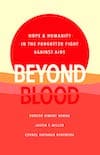
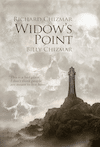
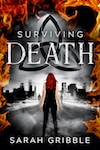
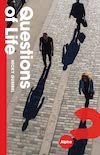

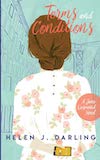
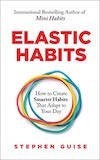


I am a photographer who creates Book Cover Images using my own original concepts and photography. I came across your site and was wondering how I might go about being considered to be listed on your site? I have attached a link to my site which features my available images. (titles are for show)
Regards,
Fred Moore